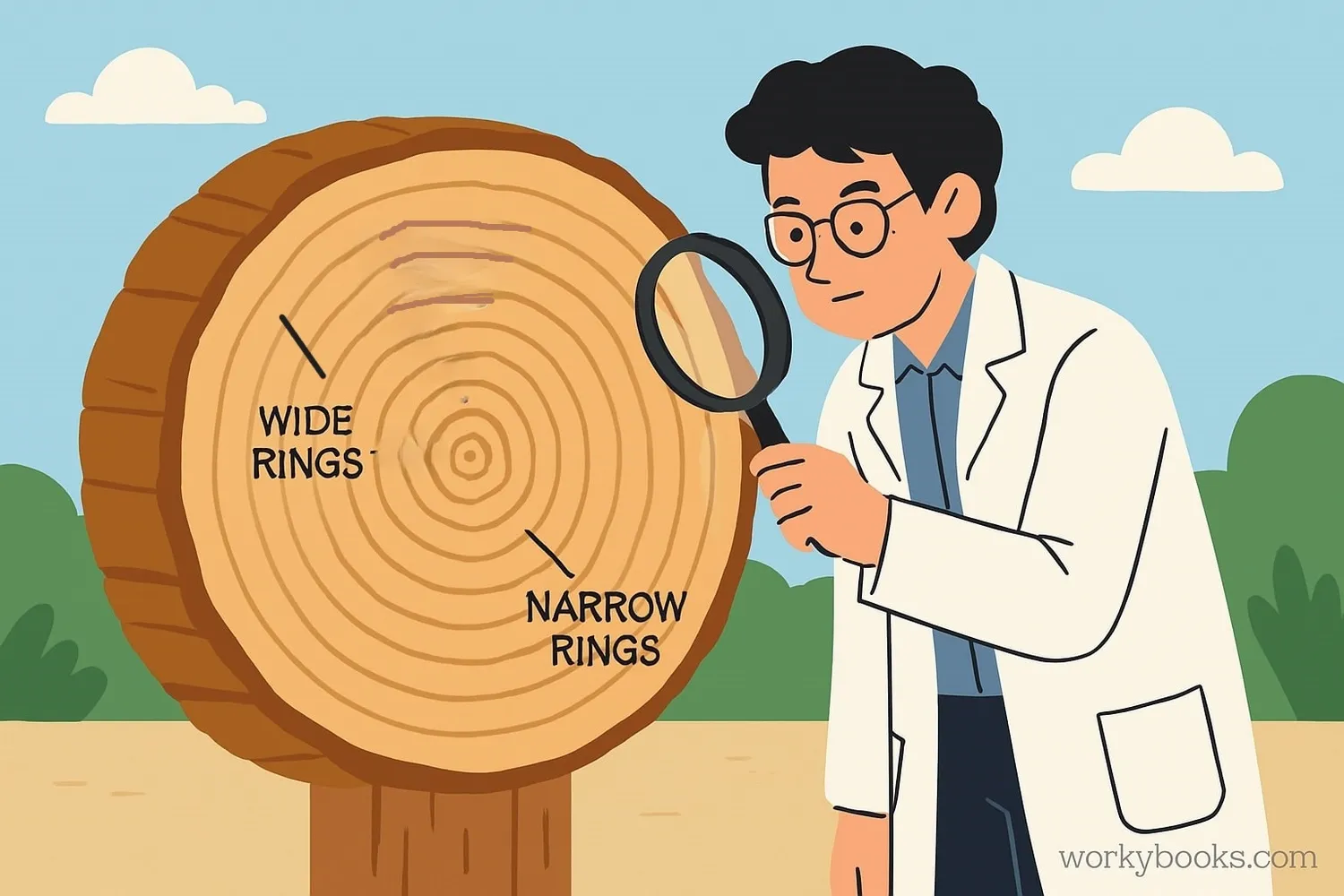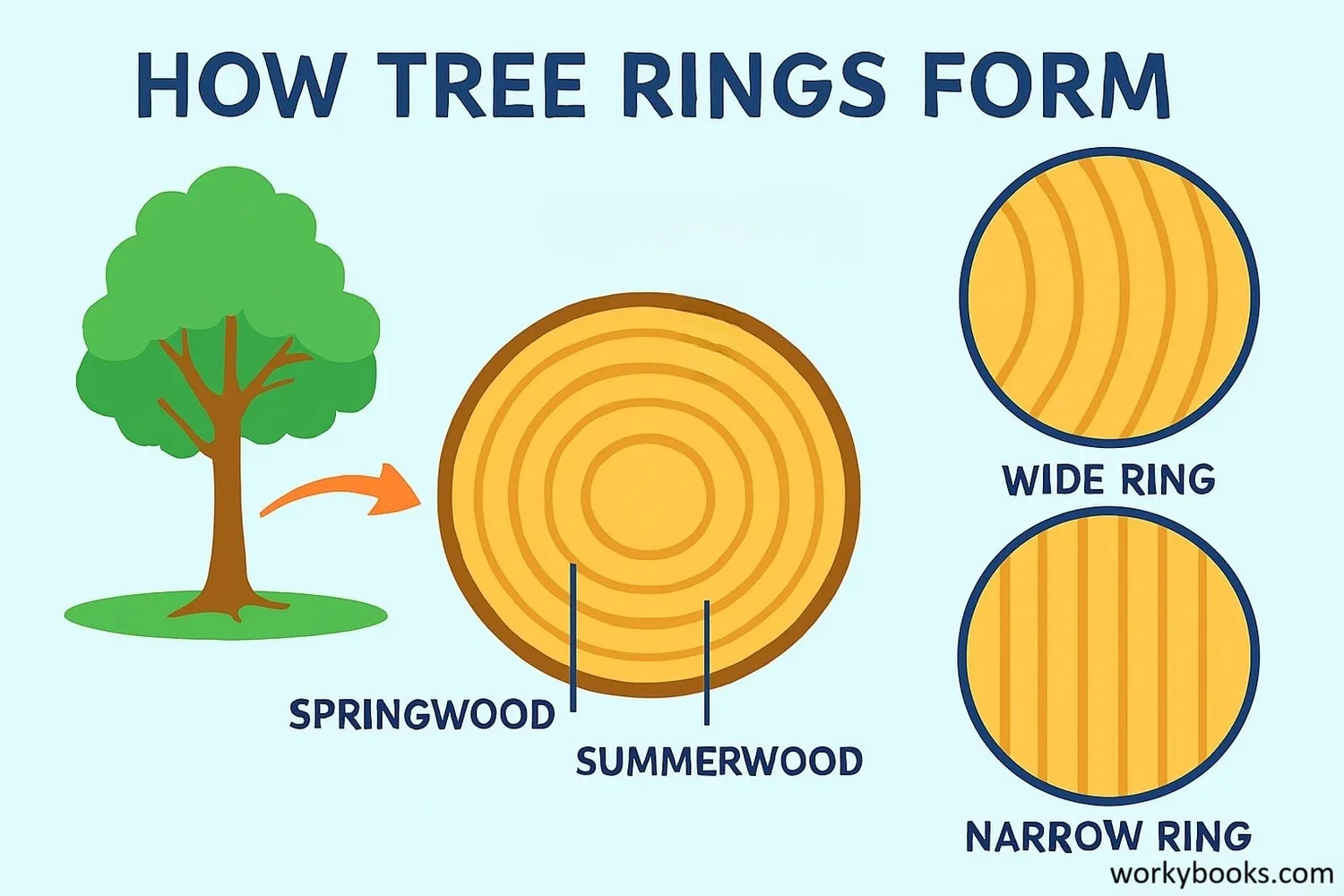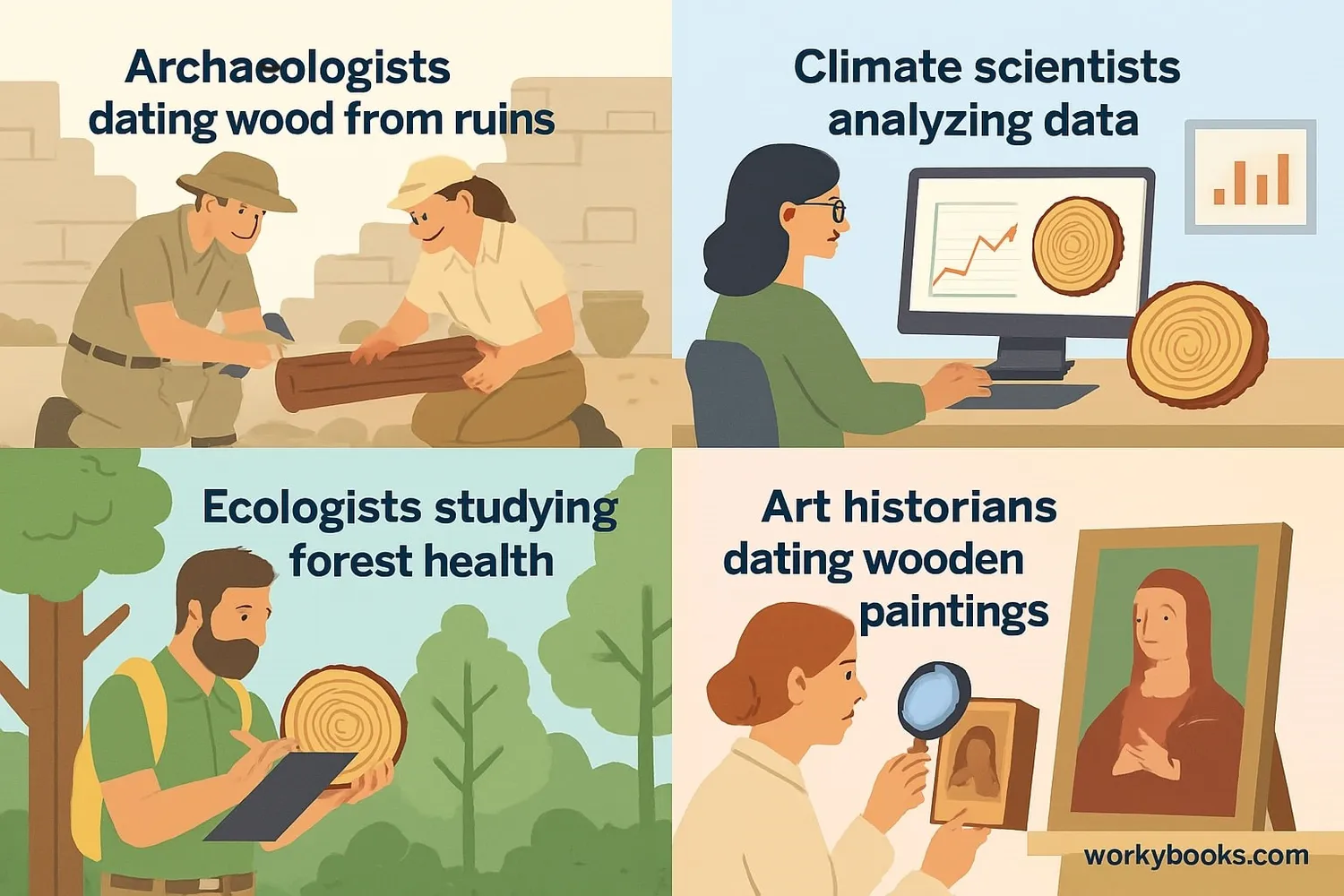Dendrochronology - Definition, Examples, Quiz, FAQ, Trivia
Discover how tree rings reveal secrets about history, climate, and our environment!
What is Dendrochronology?

Dendrochronology (den-dro-kron-OL-o-gy) is the scientific method of dating tree rings to study past climate conditions and environmental changes. The word comes from Greek:
"dendron" meaning tree, "chronos" meaning time, and "logos" meaning study.
Scientists called dendrochronologists study the patterns of tree rings to learn about:
• The age of trees and forests
• Historical climate patterns
• Environmental changes over time
• Dating archaeological artifacts
Trees grow a new ring each year, creating a natural record of environmental conditions throughout their lifetime. By examining these rings, scientists can "read" the tree's history!
Science Fact!
The oldest living tree with verified age is a Great Basin bristlecone pine named "Methuselah" that's over 4,800 years old!
How Tree Rings Form

Tree rings form as trees grow throughout the seasons. Each ring represents one year of growth. Here's how they form:
Spring Growth
In spring, trees grow quickly, creating light-colored wood with large cells
Summer Growth
Growth slows in summer, creating darker wood with smaller cells
Winter Dormancy
Growth stops in winter, creating a clear boundary between years
Ring Patterns
Wide rings = good growing conditions; Narrow rings = stress or drought
By measuring the width of each ring and comparing patterns across trees, scientists can:
• Determine the age of a tree
• Understand past climate conditions
• Detect environmental changes
• Identify events like fires or insect outbreaks
The pattern of wide and narrow rings creates a unique "fingerprint" for each time period that scientists can match across different trees and locations.
Tree Ring Fact!
In some trees, one year can have multiple rings if unusual weather patterns cause multiple growth spurts in a single year!
How Scientists Use Tree Rings

Dendrochronology has many important applications across different scientific fields:
Climate Research
Studying past climate patterns to understand climate change
Archaeology
Dating wooden artifacts and ancient structures
Fire History
Reconstructing historical fire patterns in forests
Scientists use specialized tools to extract and study tree rings:
• Increment borer: Extracts a thin core sample from a living tree
• Cross-dating: Matching patterns between trees to extend timelines
• Dendrometers: Measure small changes in tree diameter
By combining tree ring data from living trees, historical wood, and ancient logs, scientists have created tree ring chronologies that extend back over 12,000 years!
Did You Know?
Tree rings helped date the famous Viking settlement at L'Anse aux Meadows in Canada to exactly 1021 CE!
Tree Ring Quiz
Test your dendrochronology knowledge with this quiz! Answer all 5 questions to see how much you've learned.
Frequently Asked Questions
Here are answers to some common questions about tree rings and dendrochronology:
Fun Tree Ring Trivia
Discover some amazing facts about tree rings and dendrochronology!
Ancient Records
The oldest known living tree is "Methuselah," a bristlecone pine in California that's over 4,800 years old. That means it was already growing when the Egyptian pyramids were being built!
Moon Wood
Some of the wood used in Stradivarius violins came from trees that grew during a period of unusually slow growth caused by the Little Ice Age. This "moon wood" has special acoustic properties!
Historical Calendar
Tree rings helped scientists precisely date the Viking settlement at L'Anse aux Meadows in Canada to exactly 1021 CE - exactly 1,000 years before the site became a UNESCO World Heritage location!
Radiocarbon Calibration
Tree rings are so precisely dated that they're used to calibrate radiocarbon dating! The known dates from tree rings help scientists create more accurate carbon-14 dating curves.




